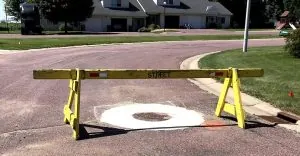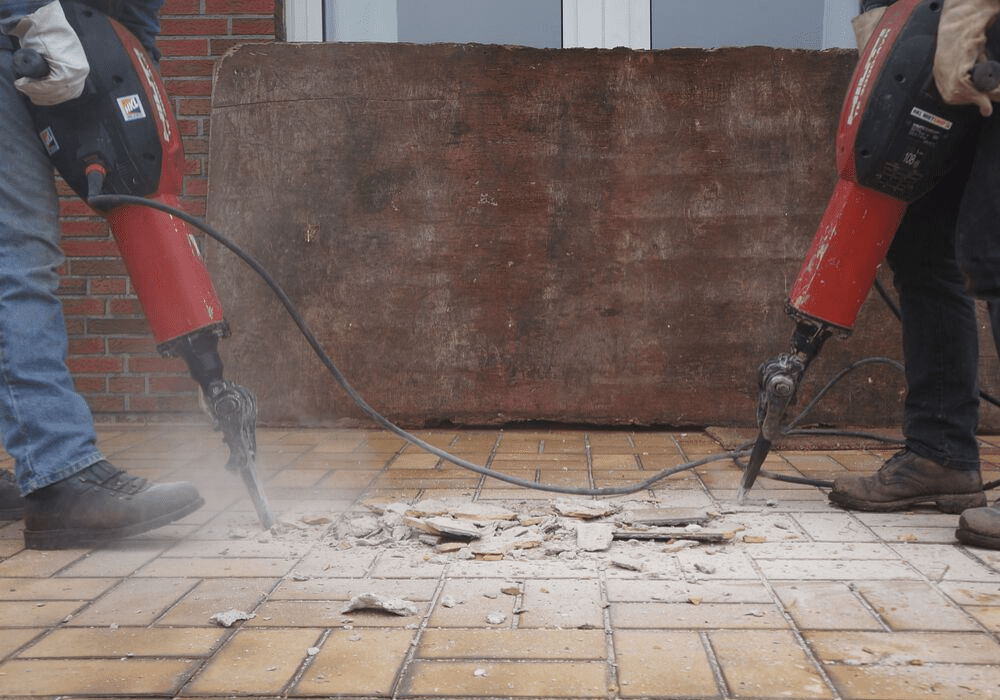

Before the Mr. Manhole method was invented, construction crews relied on jackhammers to pound away at asphalt and concrete to reveal the manhole frame. It was hard work. It took a five-person crew about five hours to complete one manhole rehabilitation. During the back-breaking work this took, crews faced numerous injuries, mainly because of the risk power tools have.
Power tools are associated with many risks, including falling or flying objects, striking, and abrasions. There’s also harmful dust, fumes, mists, vapors, or gases that workers are at risk of inhaling.
One of the most dangerous tools is the jackhammer. These beasts weigh upwards of 75 pounds, if not more. Working with it can cause fatigue and strain, and in some cases, more severe injuries can occur.
Many of our customers are looking for ways to avoid injuries for their crews. For those who are completing manhole rehabilitation, this means reducing the amount of jackhammering, lifting, and straining. Read on to learn some of the risks workers have when working with power tools and how you can avoid them.
It’s not hard to hurt yourself if you’re working with a jackhammer. First, the machine is heavy, so fatigue quickly occurs when working with it. It’s also quite common to strain and injure muscles and tendons. There is also the risk of injuring the lower limbs, especially feet.
One of the most significant risks is hearing damage. The tool combined with chipping concrete and air exhaust makes jackhammers incredibly loud. In total, it emits 100 decibels at two meters aways. It’s critical to use hearing protection, including sound-blocking earmuffs. Hearing damage and tinnitus can occur because of the loud noise.
The vibration from the power tool can cause Raynaud’s Syndrome and carpal tunnel syndrome. Also, breaking up concrete pavement is known to expose operators to hazardous dust that has crystalline silica in it.
Sure, you can curb injury and try to avoid it by using the above methods. However, the absolute best way to reduce injury is to limit jackhammer use altogether. If crews aren’t using the jackhammer, they can’t be injured by it.
There are several new tools on the market to help reduce the need for jackhammers.
Our own tool was developed partially with this in mind. We focused on producing a tool that would take the old, laborious method of manhole excavation and make it easier and safer. Thus, we came up with Mr. Manhole, a series of tools that cut out manhole frames. We also came up with a repair method that is water-tight and superior to old methods.
Watch the tool in action below. Specifically, notice how the crew has limited contact with heavy tools and arduous work.
Since the majority of the heavy work is done by the tool, your crews save their backs and avoid other injuries. Since the repair is done is about an hour, risks from disrupted traffic are reduced as well.
To learn more about how we developed the Mr. Manhole repair method and a series of tools, check out our About Us page.
© 2022 Critex LLC All rights reserved. | Contact | Privacy Policy | Sitemap
Website by NOW Marketing Group